Shakespeare at the University Libraries
The University of Nebraska-Lincoln Libraries has a strong collection of materials relating to Shakespeare and his works. The Shakespeare First Folio is the premiere volume in the collection that also includes rare quartos printed in the 1600s and 1700s, books that were owned by distinguished individuals, engraved illustrations of scenes from the plays, and prompt books as far back as the 1770s for Shakespearian actors at Covent Garden and Drury Lane, London.
The University Libraries’ First Folio
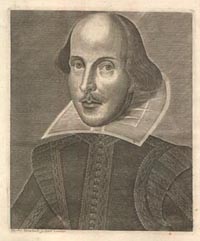
The 1623 edition of Shakespeare’s works is known as the “First Folio” because it was the first printing of all of his plays in one volume. The First Folio includes thirty-six plays arranged by comedy, history, and tragedy. Eighteen of the plays had not been published prior to this volume.
The University Libraries First Folio was donated in 1991 by Sidney Johnsen Wayland in honor of her father, Johnny Johnsen. It is the two millionth volume of the University Libraries collections. In 1971, Johnny Johnsen donated the one millionth volume to the University Libraries, The Works of Geoffrey Chaucer (1542).
Rare Quartos
Among early quartos of individual Shakespeare plays, the University Libraries houses copies of the 1674 version of Macbeth, a circa 1686 edition of Julius Caesar, and the 1703 Hamlet.
The Libraries also holds a copy of The History of King Lear in the extremely scarce 1699 version by Nahum Tate. Tate’s version of King Lear changed Shakespeare’s original tragic and death-filled ending by having Cordelia and Edgar marry and King Lear retire happily ever after. Tate’s version completely supplanted Shakespeare’s original version on the stage until 1838.
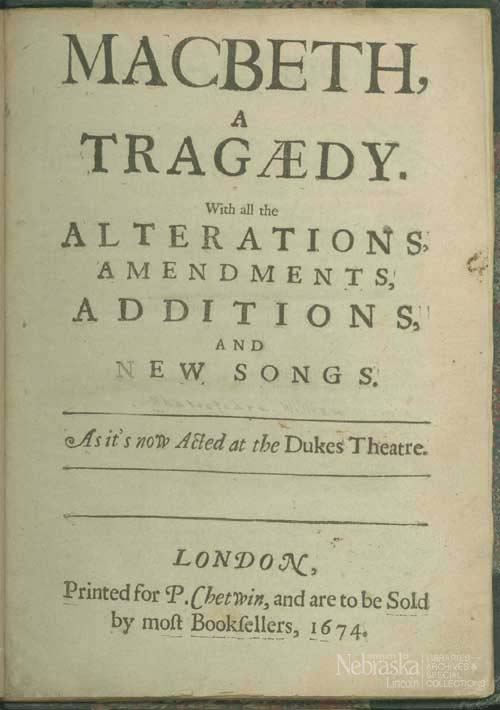
Macbeth, a tragædy. With all the alterations, amendments, additions, and new songs. As it’s now acted at the Dukes Theatre. London, Printed for P. Chetwin, 1674. Alterations and additions by Sir William D’Avenant.
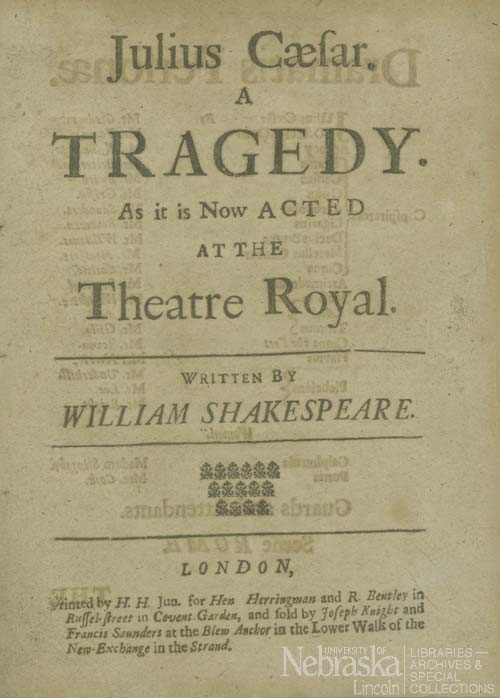
Julius Cæsar: A Tragedy. As it is now Acted At The Theatre Royal. Written by William Shakespeare. London, Printed by H.H. Jun. for Hen. Herringman, and R. Bentley in Russel-street in Covent-Garden, and sold by Joseph Knight and Francis Saunders at the Blew-Anchor in the Lower Walk of the New-Exchange in the Strand. [ca.1684].

Hamlet’s famous soliloquy, Act 3, Scene 1, “To be or not to be….” The Tragedy of Hamlet Prince of Denmark. : As it is now acted by Her Majesties Servants. London. Printed for Rich. Wellington, at the Dolphin and Crown in Pauls Church-Yard, and E. Rumball in Covent-Garden., 1703.
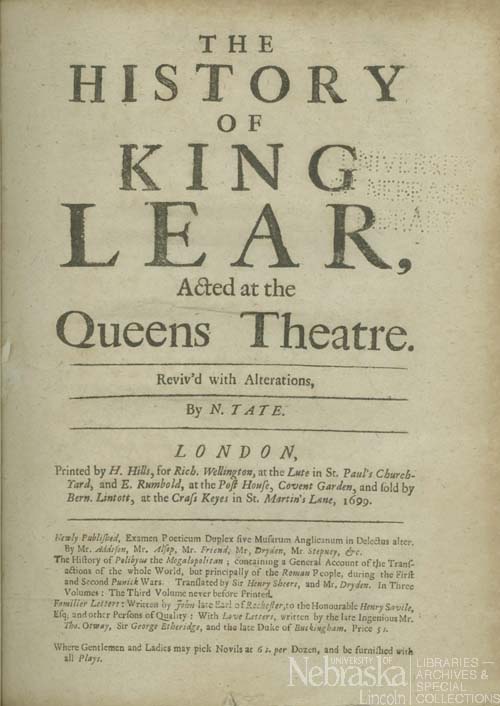
The History of King Lear, acted at the Queens Theatre. Reviv’d with alterations, by N. Tate. London, Printed by H. Hills, for R. Wellington and E. Rumbold, and sold by B. Lintott, 1699.
Prompt Books and Actors
The University Libraries holds several original prompt books from the personal collection of Sir Augustus Harris (1851-1896), who was producer at Drury Lane Theatre (from 1879) and manager of Covent Garden Opera House (from 1888). The prompt books are dated between 1773 and 1822 and document the performance of several Shakespeare plays at the Theatres Royal, Covent Garden, and Drury Lane.
The plays represented by the prompt books include Comedy of Errors, King Henry IV, King Henry V, King Henry VIII, King Lear, Measure for Measure, Merry Wives of Windsor, Romeo and Juliet, and Timon of Athens. The prompt books include many handwritten stage directions and production notes.
Actors involved in the plays relating to the prompt books include the brothers James William Wallack and Henry John Wallack, John Philip Kemble, among several other prominent names. More information about these individuals is found at the Encyclopedia Britannica’s “Shakespeare and the Globe, Then and Now.”
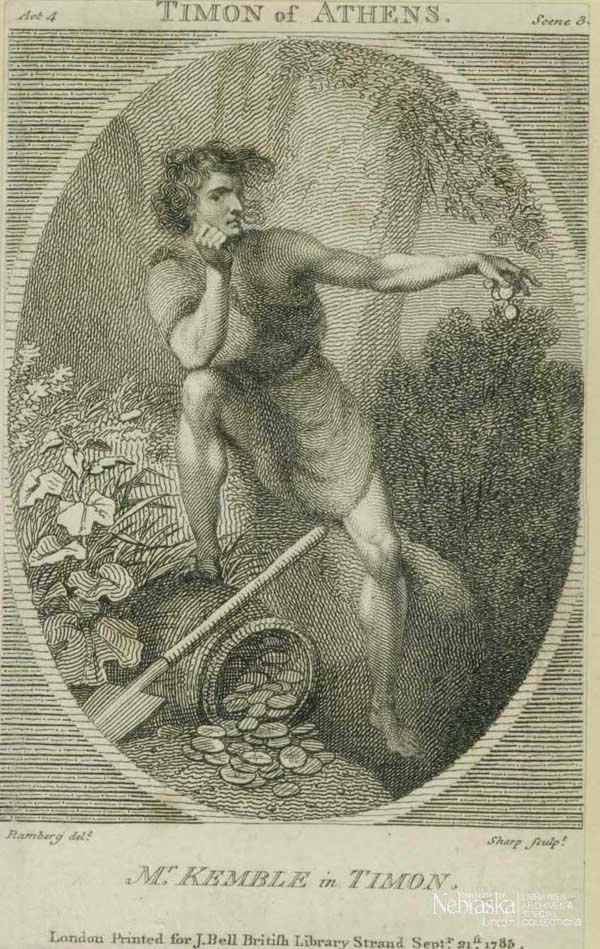
Shakespearian Actor John P. Kemble in Timon of Athens. This image is taken from a 1770s version of Bell’s edition of Shakespeare’s plays : as they are now performed at the Theatres Royal in London : regulated from the prompt books of each house by permission with notes critical and illustrative by the authors of the dramatic censor.

Timon of Athens : a tragedy / altered from Shakespeare London : Printed for John Bell, 1773.
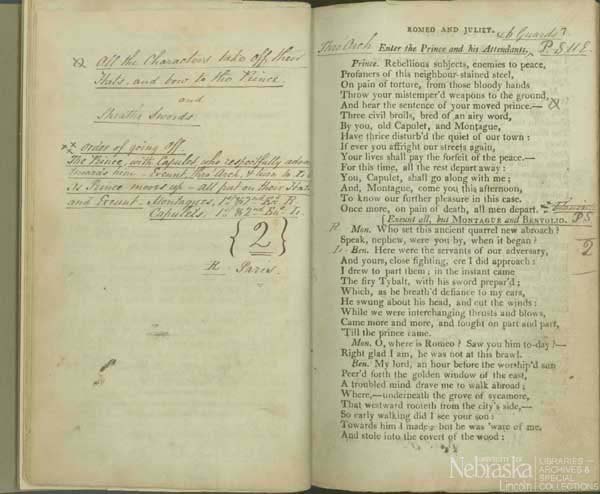
Shakespeare’s Romeo and Juliet : a tragedy / adapted to the stage by David Garrick ; revised by J.P. Kemble; and published as it is acted at the Theatre Royal in Covent Garden. London : Printed for the Theatre, 1811.
William Borlase
William Shakespeare. A Collection of Poems (London: Bernard Lintott, 1709).
This scarce 1709 edition contains the following four sections: Venus and Adonis, The Rape of Lucrece, The Passionate Pilgrim, and Some Sonnets set to sundry Notes of Musick. This copy is from the personal library of William Borlase, and contains his crest of arms. Borlase, born 1695 in Cornwall, was a fellow of the Royal Society, a geologist, and author of several historical studies. He corresponded regularly with the English poet Alexander Pope. Borlase assisted Pope in designing and building his famous grotto. William Borlase died in 1772.
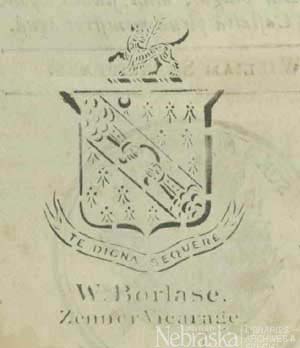
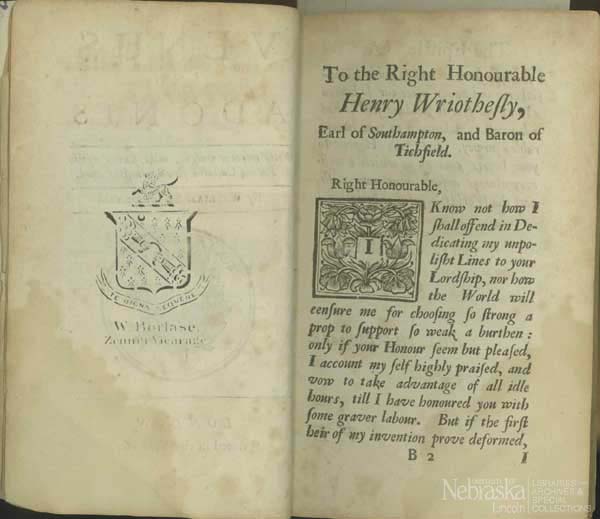
Jonathan Toup
The Works of Mr. William Shakespear, Oxford, Clarendon Press, 1771.
In 1785 delegates of the Oxford University Press presented this six volume set of Shakespeare’s works to Miss Phillis Blake in honor of her uncle Jonathan Toup. Toup was a Greek scholar who earned his M.A. from Exeter College, Oxford, and was chiefly known for his publications on Suidas, Longinus, and Theocritus.
Each of the six volumes is inscribed with the following handwritten dedication by the delegates of the Oxford University Press:
A present from the Delegates of the University Press, Oxford,
to Miss Phillis Blake, 1785:
in acknowledgement of her communication of the valuable MSS
of her late Uncle, Jonathan Toup, A.M.: – to whose memory a
monument is likewise created at their charge in the chancel of
St. Martin’s Church, near Looe, in Cornwall.
The six volume set was later inherited by Jonathan Toup’s descendant Jonathan Toup Nicolas, a member of the Royal Navy, whose chief naval exploits are narrated in William James, Naval History of Great Britain (London: R. Bentley, 1837), Volume 5 and Volume 6.
The following inscription appears within the title pages of Volume 1 and details the inscription on the monument at St. Martin’s Church in Cornwall.
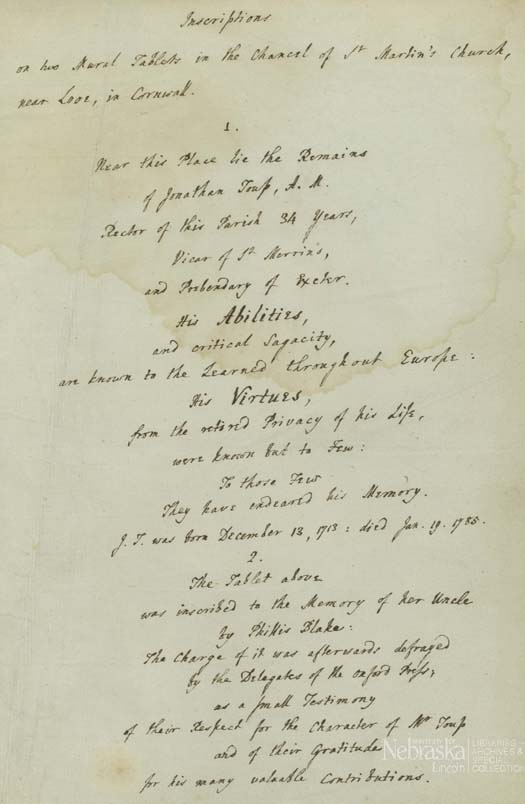
INSCRIPTION
Inscriptions
on two Mural Tablets in the Chancel of St. Martin’s Church,
near Looe, in Cornwall.
1.
Near this Place lie the Remains
of Jonathan Toup, A.M.
Rector of this Parish 34 years,
Victor of S. Merrins,
and Prebendary of Exeter.
His Abilities,
and critical sagacity,
are known to the Learned throughout Europe:
His Virtues,
From the retired privacy of his Life,
Were known but to Few:
To those Few
They have endeared his Memory.
J.T. was born December 13, 1713: died Jan. 19. 1785.
2.
The Tablet above
Was inscribed to the Memory of her Uncle
By Phillis Blake:
The charge of it was afterwards defrayed
By the Delegates of the Oxford Press,
as a small Testimony
of their Respect for the Character of Mr. Toup
and of their Gratitude
for his many valuable contributions.
Illustrations of the Plays
Shakespeare Scenes (London Fine Art Publishing Company, 1875). This rare work, of which only one hundred were printed, contains thirty exquisitely executed India Proof engravings depicting scenes from various Shakespeare plays.
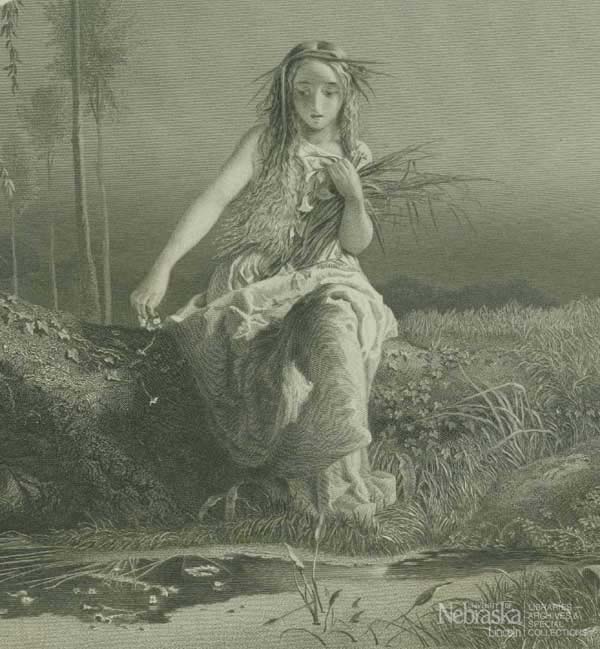
Ophelia, Plate 22, Engraved by C. Cousen after a painting by A. Hughes.
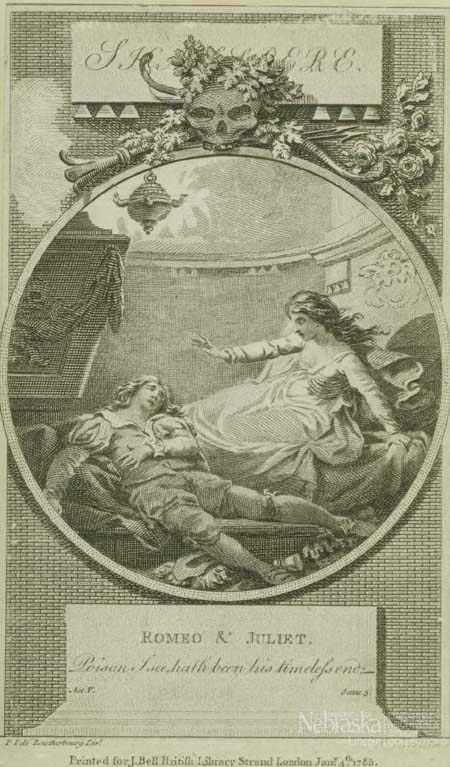
Romeo and Juliet, Act 5, Scene 3, “Poison I see hath been his timeless end, ” from Bell’s Shakespeare.
The last two images are from a 1770s version of Bell’s edition of Shakespeare’s plays : as they are now performed at the Theatres Royal in London: regulated from the prompt books of each house by permission with notes critical and illustrative by the authors of the dramatic censor.
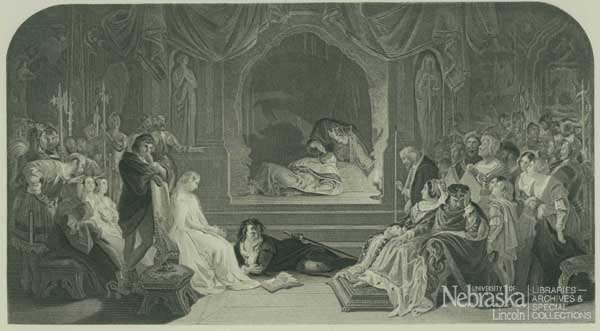
Hamlet, Plate 10, Engraved by C. Rolls after a painting by D. Maclise.
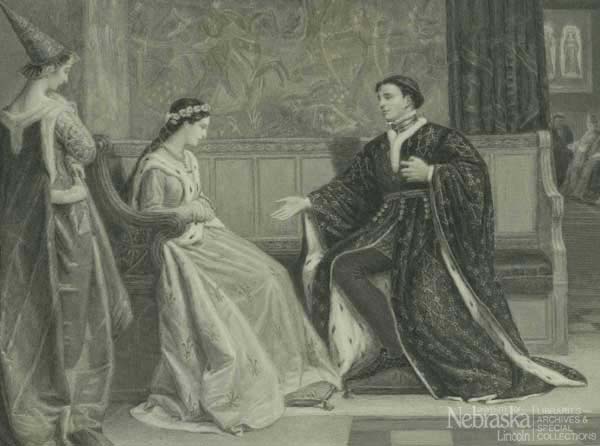
Henry V, Plate 13, “Wooing of Henry V,” Engraved by W. Greathbach after a painting by W. F. Yeames.
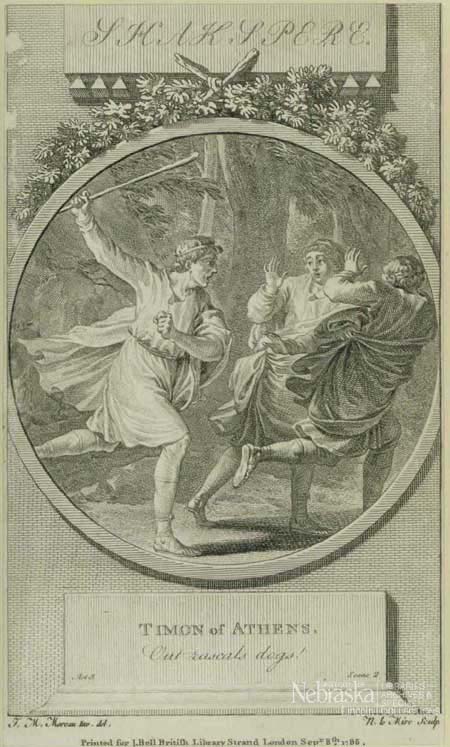
Timon of Athens, Act 5, Scene 1, “Out rascals, dogs!” from Bell’s Shakespeare.
